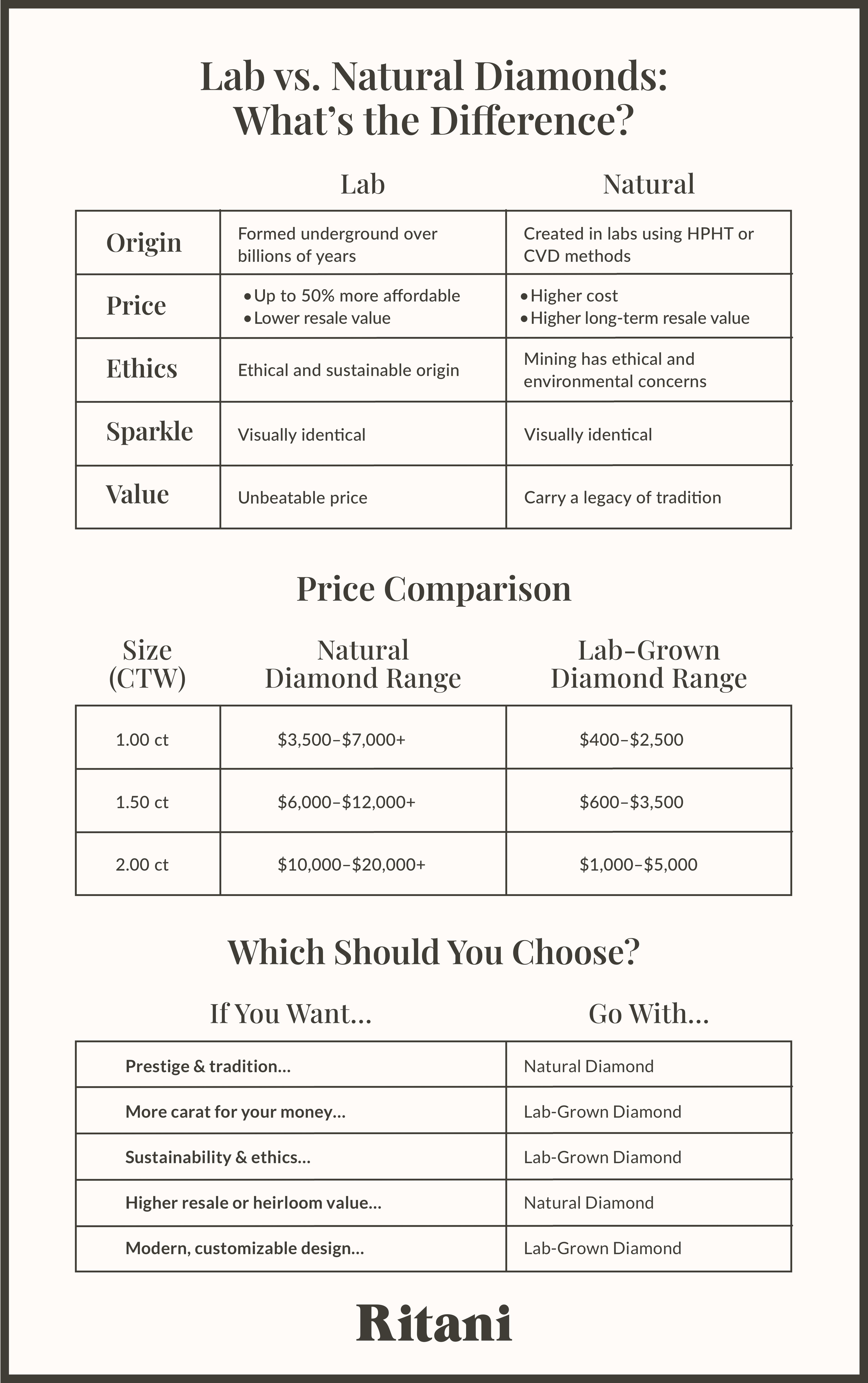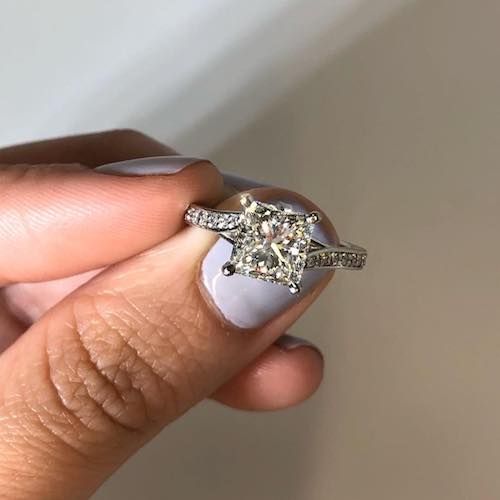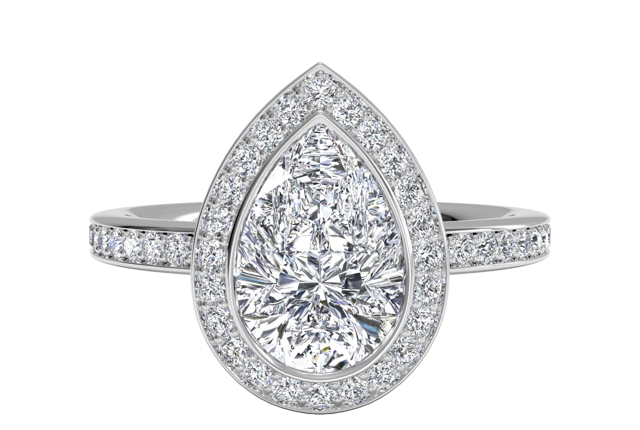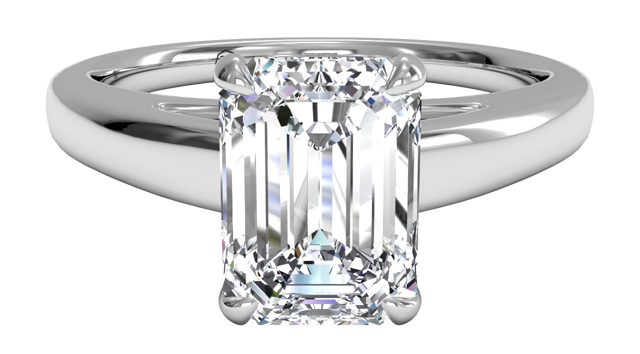Natural vs. Lab Diamond Engagement Rings: Which Is Right for You?

One of the biggest decisions you’ll make when buying an engagement ring isn’t about shape or setting—it’s whether to choose a natural diamond or a lab-grown diamond. Both are real diamonds with stunning sparkle, but they differ in origin, price, and perception. This guide breaks down the key differences between lab and natural diamonds, and helps you decide which is the best fit for your values, budget, and style.
What’s the Difference?
Feature
| Natural Diamond | Lab-Grown Diamond
|
Origin | Formed underground over billions of years | Created in labs using HPHT or CVD methods |
Chemistry | Carbon crystal
| Identical carbon crystal structure
|
Certification | GIA, IGI, etc.
| GIA, IGI, etc.
|
Appearance | Visually identical
| Visually identical
|
Shape - Pros & Cons at a Glance
Natural Diamonds
Pros:
- Timeless prestige & tradition
- Higher long-term resale value
- Rarity can increase emotional value
Cons:
- Higher cost
- Mining has ethical and environmental concerns
- Supply is more limited (especially for large stones)
- Shape
Lab-Grown Diamonds
Pros:
- Up to 50% more affordable
- Ethical and sustainable origin
- Larger size or higher quality for your budget
Cons:
- Lower resale value
- Perceived as “less special” by some (though this is changing rapidly)
- Shape
Price Comparison
Size (CTW) | Natural Diamond Range
| Lab-Grown Diamond Range
|
| 1.00 ct
| $3,500–$7,000+
| $400–$2,500
|
| 1.50 ct
| $6,000–$12,000+
| $600–$3,500
|
| 2.00 ct
| $10,000–$20,000+
| $1,000–$5,000
|
Lab diamonds give you flexibility to invest in a better setting, larger size, or add custom touches like halos or pavé bands.
Are Lab-Grown Diamonds Ethical?
Yes—lab-grown diamonds:
- Are conflict-free by nature
- Have a smaller environmental footprint
- Appeal to eco-conscious and values-driven shoppers
Many engagement ring buyers today choose lab diamonds to align with their values while maximizing beauty and budget.
Should You Worry About Resale Value?
Only if you’re planning to resell—most couples don’t.
- Natural diamonds typically retain more resale value
- Lab diamonds hold emotional rather than investment value
- Jewelry isn’t like real estate—buy it for love, not profit
Lab vs. Natural: Which Should You Choose?
If You Want… | Go With… |
Prestige & tradition | Natural Diamond |
More carat for your money | Lab-Grown Diamond |
Sustainability & ethics | Lab-Grown Diamond |
Higher resale or heirloom value | Natural Diamond |
Modern, customizable design | Lab-Grown Diamond |
Mixed Options: The Best of Both Worlds
Some couples choose:
- A natural center diamond with lab-grown side stones
- A lab-grown diamond engagement ring and a natural diamond wedding band
- To upgrade over time—starting with lab, moving to natural later
There’s no rulebook—only what feels right for your relationship and budget.
Whether you choose a natural or lab-grown diamond, the most important thing is that your engagement ring reflects your love story. Lab-grown diamonds offer unbeatable value and ethical sourcing, while natural diamonds carry a legacy of tradition. The right choice is the one that feels perfect to you. Watch the video below to learn more about the difference between natural and lab Engagement Rings.


